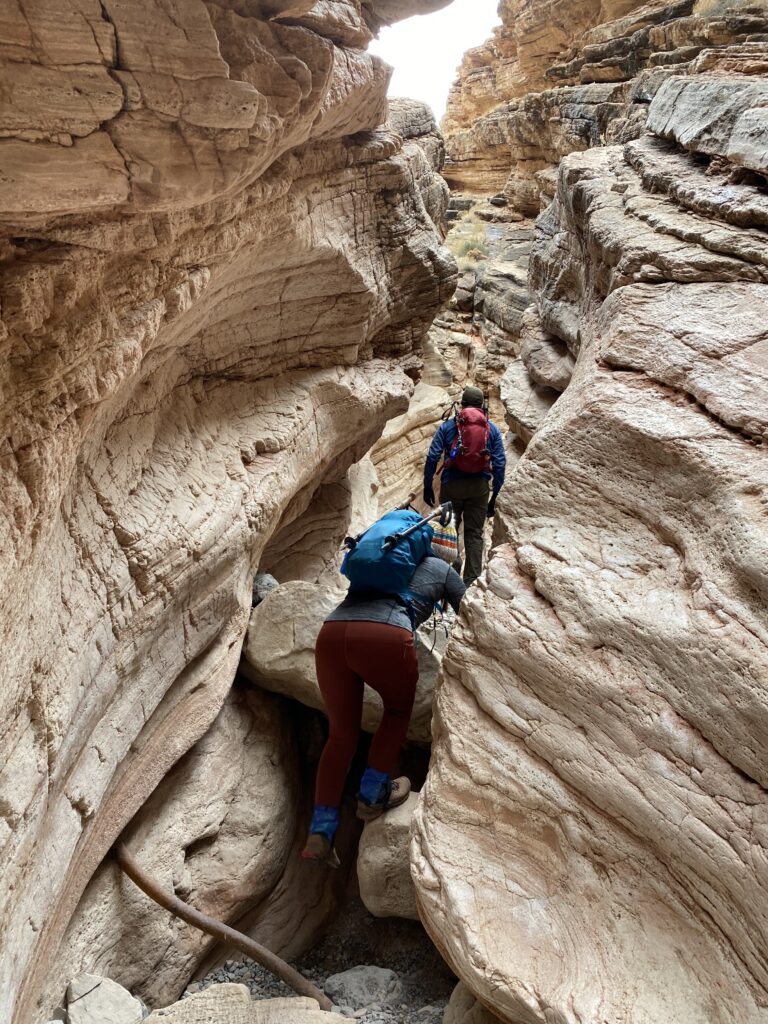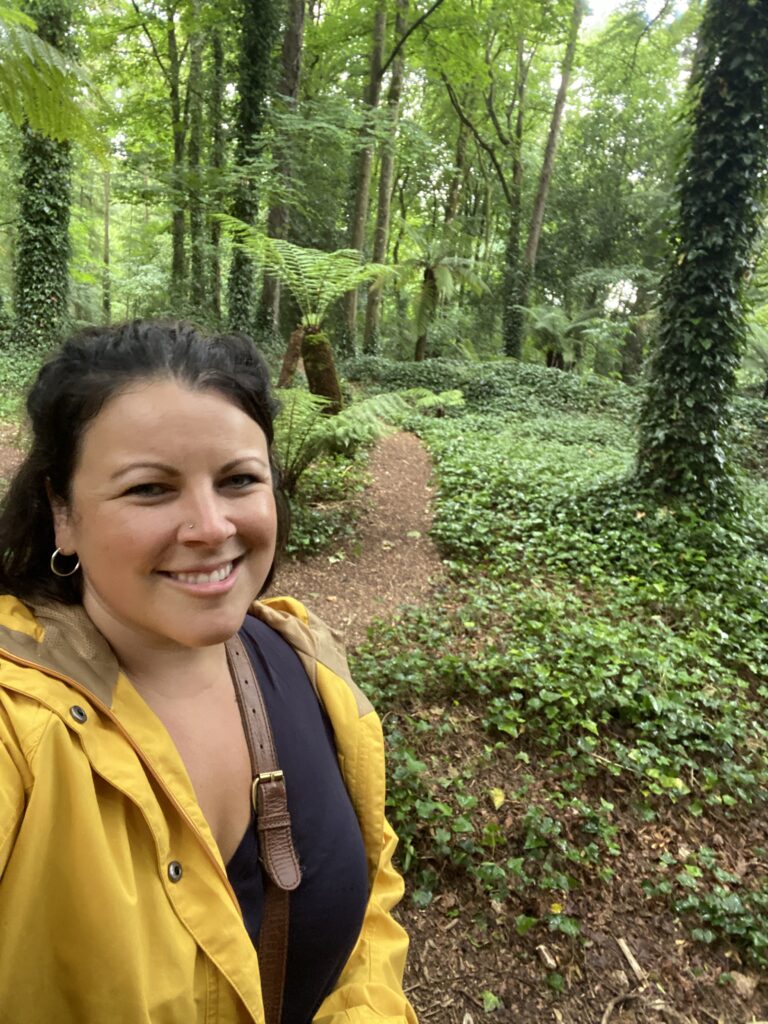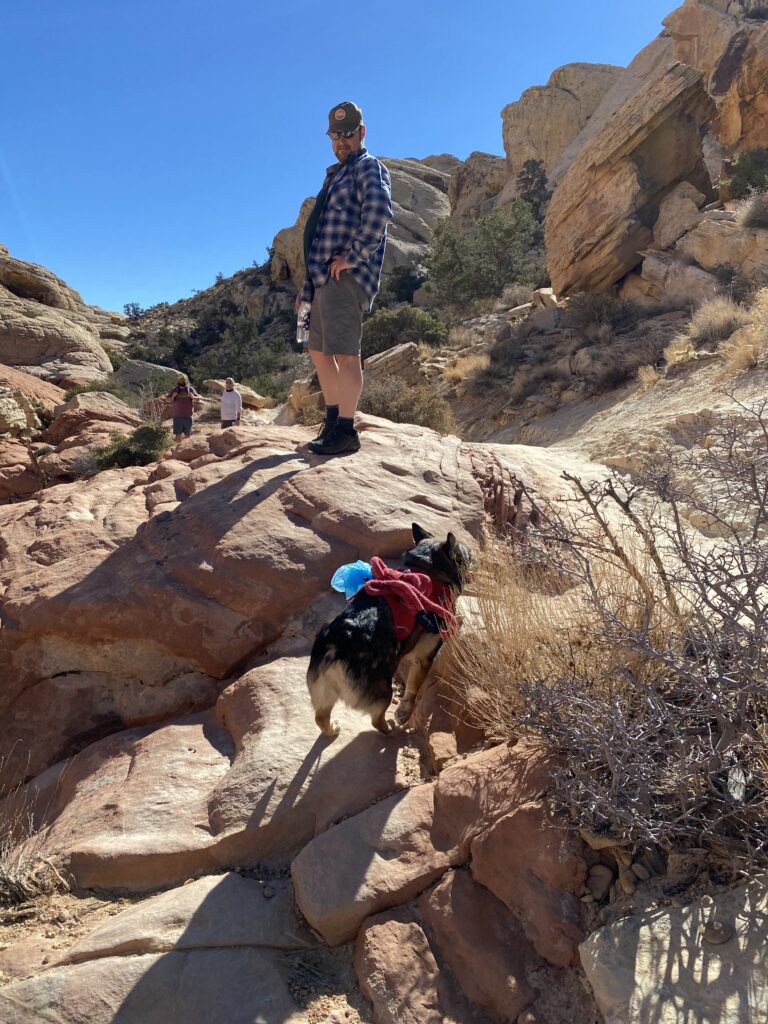A Beginners Guide to Hiking Happily Into the New Year.
So you’ve heard about this whole hiking thing. You’ve seen beautiful photos, you’ve heard stories of how great it is for your health and wellbeing, maybe you’ve even bought a new pair of shoes but, now what? Do you go 1 mile or 10? Are there hills? Should you bring a snack or a whole dang sandwich? If you’re new to the world of happy hiking it can get a bit overwhelming but we promise it’s actually quite simple. It can be as easy as tossing on a pair of shoes and heading out the front door for 20 minutes. These tips and tricks are meant to help the beginner hiker lear how to hike, who may be doing a half hour up to 3 hour trip.
When you are starting any new activity please remember to always consult your doctor or trusted health advisor.

Where and When

There’s a few things to keep in mind when picking your trail, the main one being your physical abilities. If you’re just starting out, we highly recommend you UNDERESTIMATE your physical prowess. You can always add length and difficulty as you go. Distance, elevation and terrain are equally important. A one mile hike on a flat trail is very different from a one mile hike that is all uphill. Apps like All Trails will give you an idea of the distance and elevation and often have other user comments about what to expect. You can also google the trail or park you’re considering and see what others have said. You’ll want to consider terrain based on your physical needs. If you are a bit wobbly you’ll want to look for trails that are well groomed or even paved to avoid those rocky and rooty areas that could trip you up.
As important as where you go is when. As a beginner, you’ll want to ensure you can end your trek in the daylight. Even if it’s a simple trail, you’ll want to have a few hikes under your belt before getting into night time hiking. For an average beginner, I’d use 30 minutes a mile as a general time frame then adjust accordingly once you’ve done a few hikes and know your personal speed. It’s also important to check what type of uses are permitted on your trail. If it’s a popular mountain biking trail, you’ll want to take that into account and may want to avoid times when the trail is busy with bikes.
What to bring

For a shorter, easy hike (30 minutes or less) you really will only need weather appropriate clothing, water, ID and any personal emergency medical items like an epipen. The easiest option is a small fanny pack. I happen to love my Kavu one for carrying emergency meds, kleenx and my ID. I tie a raincoat around my waist if needed and carry my water bottle. There are also some great options for water packs and belts to keep your hands free. Nathan always has a great selection of these.
When you get into the 30-90 minute hikes, generally the same but some people may find they need a small snack halfway through. You’ll need to know your personal health needs and figure out what works for you in terms of balancing salt, sugar and electrolytes. We are not experts on this stuff so please do your research, consult your doctor or nutritionist, or sometimes the best bet is trial and error. You’ll figure out what your body needs as time goes on.
Depending on your physical abilities, hikes over 90 minutes are where you may want to consider bringing a backpack to ensure you have enough fluids, snacks, and possibly some extra gear. I always like having an extra pair of socks if I’m hiking where it’s wet and muddy, layers like a warmer shirt or rain coat if it’s possible the weather or temp may change and small first aid kit.
Always, always, always make sure you have some form of ID with you. I highly recommend a Road ID bracelet if you plan to make this a regular activity but even just throwing your license in your pocket will do. Some way for people to know who you are just in case of emergency.
Safety
If you are hiking alone – tell somewhere where you are going and when. As a beginner, we recommend picking a well used trail and/or one that has consistent cell service. Save the riskier hikes for once you are very comfortable with the activity and have built up both your physical and mental skill set. Pick a well marked trail and know your limits. We highly recommend leaving the earbuds at home and keeping the music or podcasts off. You want to be very aware of your surroundings and one of the best parts of hiking is stepping away from the noise and connecting with nature.
Rules of the trail
Basic rules are simple. Leave places and people better than you found them. Do not litter (this includes things like orange and banana peels), in fact it’s great if you pick up any trash you find along the way. Do not alter the trail or nature. This means not picking flowers, carving into trees, or moving rocks/logs. When you pass other folks, smile and say hello. If you come up behind someone, let them know you are there. Yield to faster hikers. If there are bikes on the trail, in theory they are supposed to yield to you… in practice, it’s much easier for you to step aside for a moment to let them pass. And stay on the trail. It can be tempting to wander off but if you are not in an area that clearly allows this, it can be extremely detrimental to wildlife and unsafe for you.

Now that you have the basics, I’d say it’s time to just do it! Taking the first step is always the scariest but you’ll find that the hiking community is extremely welcoming and the trails are a place of peace, relaxation, healing and fun!
